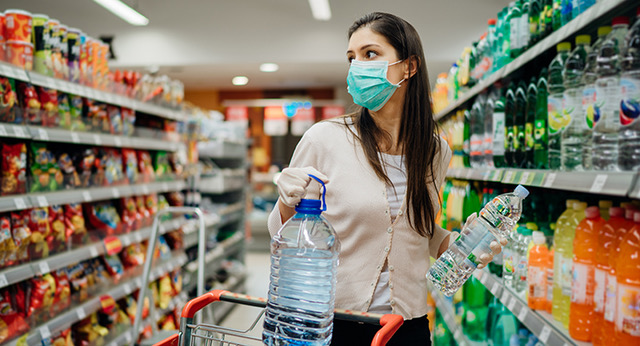The Pandemic v The Great Recession
By Happi Staff | 05.21.20
There are striking similarities, says IRI.
There's been nothing like COVID-19, yet, there are eery similarities to the Great Recession, according to IRI. In its special series, “Recession-Proof Your Business” IRI notes some consumer behavior mirrors that of past recessions, including the Great Recession of 2008-2009.
For the third installment of the series, “How Big Brands Performed During the Great Recession,” IRI delved into its archives to study food and beverage brands with sales of $100 million-plus and nonfood brands with sales of $75 million-plus to learn strategies relevant to CPG manufacturers facing a new recession.
For the third installment of the series, “How Big Brands Performed During the Great Recession,” IRI delved into its archives to study food and beverage brands with sales of $100 million-plus and nonfood brands with sales of $75 million-plus to learn strategies relevant to CPG manufacturers facing a new recession.
Lessons from the Great Recession
-
Even in a recession, retaining and/or acquiring penetration remains the top growth driver. Brands must:
- Focus on strong distribution in value channels
- Offer the right pack sizes and price points
- Tap into new usage occasions and emerging need states through new products, value-tier extensions and more premium products in select categories and markets
- Reinforce overall value in targeted messaging to attract new users
- Look to convert new buyers to valuable buyers.
Implications for 2020 Recession
- With significant gains in new buyers, as well as risks from brand switching of loyal buyers due to product availability, brands must look to retain their valuable buyers as well as convert new buyers to valuable long-term buyers:
- Ensure strong distribution across grocery and e-commerce, in addition to value channels
- Refocus innovation efforts post COVID-19 assortment rationalizations to target value-tier needs and affordable luxury
-
Tailor messages related to more at-home activity (e.g., cooking at home, entertainment at home) and provide comfort during high uncertainty.
For example, back in 2010, Procter & Gamble reworked Cascade and those innovations in auto dishwasher detergents drove increases in pricing; these new SKUs had price premiums of ~400%. Similarly, Olay introduced more specialized, anti-aging products and the new sub-brands have price premium of ~50%+, according to IRI. Meanwhile, Maybelline introduced natural and customizable foundations and the new sub-brands have price premium of ~25%+













